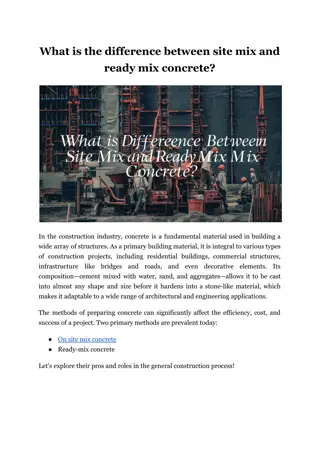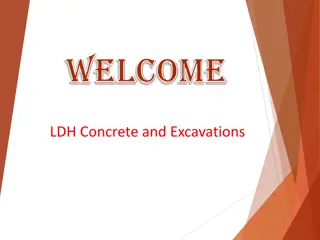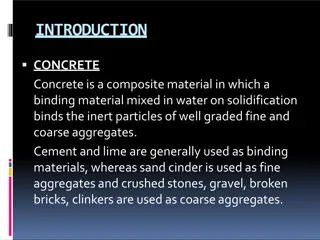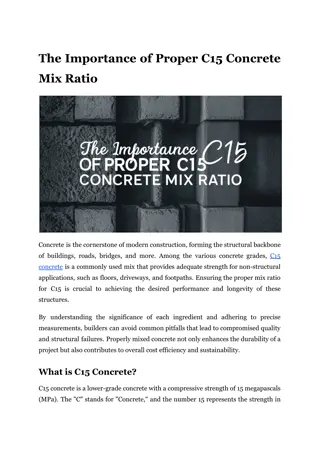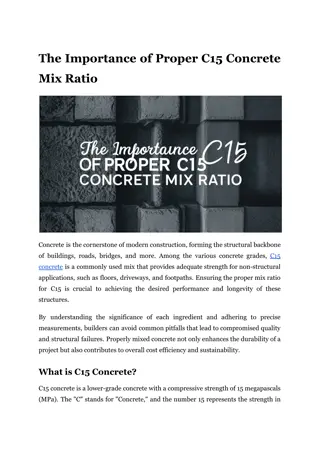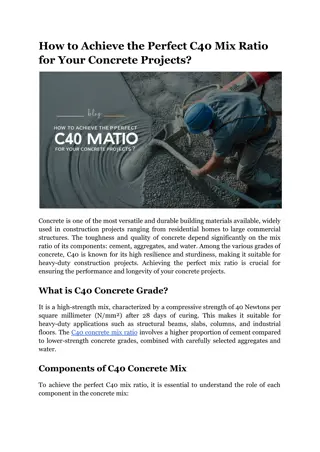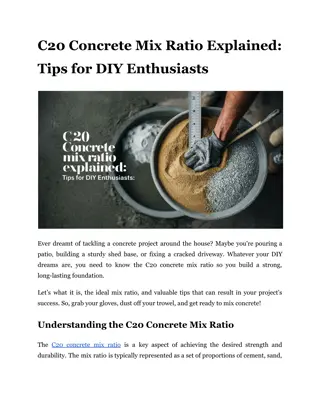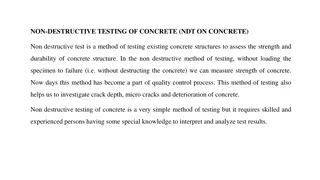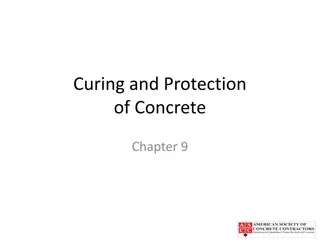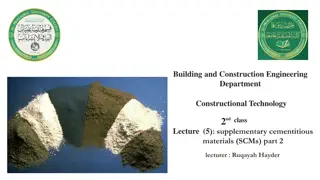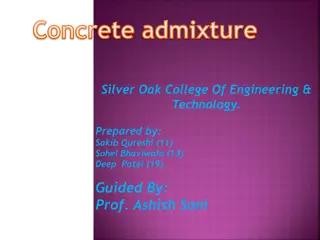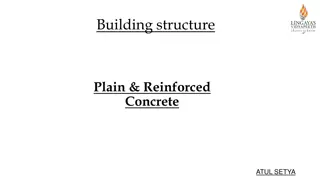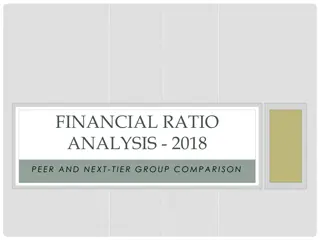
Why The C30 Concrete Mix Ratio is Ideal for High-Strength Applications?
Discover why the C30 concrete mix ratio is ideal for high-strength applications. Learn about its benefits and practical uses in construction.n
Download Presentation

Please find below an Image/Link to download the presentation.
The content on the website is provided AS IS for your information and personal use only. It may not be sold, licensed, or shared on other websites without obtaining consent from the author. Download presentation by click this link. If you encounter any issues during the download, it is possible that the publisher has removed the file from their server.
E N D
Presentation Transcript
Why The C30 Concrete Mix Ratio is Ideal for High-Strength Applications? Concrete is one of the most widely used building materials in the world. It's strong, durable, and versatile. But not all concrete is created equal. Different types of concrete are designed for different purposes. One type that's particularly useful for high-strength applications is C30 concrete. What is C30 Concrete? Before we get into the benefits of C30, let's start with the basics. C30 is a grade of concrete. The "C" stands for "Concrete," and the number "30" refers to its compressive strength, which is measured in megapascals (MPa) or newtons per square millimeter (N/mm ). So, C30 has a compressive strength of 30 MPa or 30 N/mm . To put this in perspective, regular concrete used for simple projects like sidewalks or driveways might have a strength of 20 MPa (C20). C30 is significantly stronger, making it suitable for more demanding applications.
C30 Concrete Mix Ratio The strength and quality of concrete depend largely on its mix ratio. C30 concrete mix ratio refers to the proportions of the main ingredients in concrete: 1. Cement 2. Sand (fine aggregate) 3. Gravel or crushed stone (coarse aggregate) 4. Water The typical mix ratio for C30 is 1:2:3, which means: 1 part cement 2 parts sand 3 parts gravel or crushed stone Water is added to this mix to activate the cement and make the concrete workable. The amount of water used is crucial and is usually expressed as a water-to-cement ratio. For C30, this ratio is typically around 0.45 to 0.5. Read More Articles: The Importance of Correct Mix Ratios in C35 Concrete for Structural Integrity Why C30 is Ideal for High-Strength Applications Here is what you need to know: 1. Excellent Compressive Strength The most obvious advantage of C30 concrete is its high compressive strength. At 30 MPa, it can withstand significant pressure without cracking or breaking. This makes it ideal for structures that need to bear heavy loads, such as: Foundations for large buildings Bridge supports High-rise buildings Industrial floors Parking structures In these applications, the extra strength of C30 provides a crucial safety margin, ensuring the structure can handle expected loads with room to spare.
2. Improved Durability Strength isn't just about handling heavy loads. It also contributes to durability. Stronger concrete is generally more resistant to wear and tear, weathering, and other forms of damage. This means structures built with C30 tend to last longer and require less maintenance over time. 3. Better Resistance to Cracking One of the main ways concrete fails is through cracking. Cracks can occur due to various factors, including shrinkage as the concrete dries, temperature changes, and applied loads. The higher strength of C30 makes it more resistant to cracking, especially under load. This is particularly important in structural applications where cracks could compromise the integrity and safety of the building. 4. Enhanced Water Resistance The mix ratio used in C30 concrete typically results in a denser material with fewer pores. This makes it more resistant to water penetration. Water resistance is crucial for many high-strength applications, especially those exposed to the elements or in contact with groundwater. Better water resistance means less risk of water-related damage, such as: Corrosion of reinforcing steel Freeze-thaw damage in cold climates Chemical attack from dissolved substances in water 5. Improved Chemical Resistance The dense structure also provides better resistance to chemical attack. This is important in industrial settings where the concrete may be exposed to harsh chemicals. It's also beneficial in urban environments where the concrete may be exposed to de-icing salts or acid rain. 6. Faster Strength Development C30 concrete tends to develop strength faster than lower-grade concrete. This can be a significant advantage in construction projects where time is of the essence. Faster strength development means: Forms can be removed sooner
Subsequent construction stages can begin earlier The overall project timeline can be shortened 7. Better Performance in Extreme Conditions High-strength applications often involve challenging environments. C30 performs well in a variety of extreme conditions: In hot climates, it resists heat-related degradation better than lower-strength concretes. In cold climates, its density and strength help it withstand freeze-thaw cycles. In marine environments, it provides better resistance to salt water and salt spray. 8. Improved Fire Resistance While all concrete provides some level of fire resistance, higher-strength concretes like C30 tend to perform better in fire situations. This is partly due to their density and partly due to their composition. The improved fire resistance can be crucial in high-rise buildings, industrial facilities, and other structures where fire safety is a major concern. Read More Articles: Cybersecurity 101 - Protecting yourself and Your Company from Internet Threats 9. Greater Design Flexibility The high strength of C30 allows for more flexibility in structural design. For example: Columns and beams can be made slimmer while still supporting the same load. Longer spans can be achieved in bridges and large buildings. Thinner floor slabs can be used, reducing the overall weight of the structure. This flexibility can lead to more efficient use of space and materials, potentially reducing costs and improving the aesthetics of the structure. 10. Lower Life-Cycle Costs While C30 concrete may be more expensive upfront than lower-grade options, its durability and performance characteristics often result in lower life-cycle costs.
Structures built with C30 typically require less maintenance and have longer service lives. This can lead to significant cost savings over the life of the structure. Applications of C30 Concrete Now that we've explored the benefits of C30, let's look at some specific applications where it's commonly used: 1. High-Rise Buildings: The strength and durability of C30 make it ideal for skyscrapers and other tall buildings. It's used in foundations, columns, beams, and floor slabs. 2. Bridges: C30 concrete is often used in bridge construction, especially for support structures like piers and abutments. Its strength and durability help ensure the bridge can handle heavy traffic loads for many years. 3. Parking Structures: Multi-story parking garages need to withstand heavy loads and constant use. C30 provides the necessary strength and wear resistance. 4. Industrial Floors: In factories and warehouses, floors need to handle heavy machinery and constant traffic. C30 offers the strength and durability required for these demanding environments. 5. Marine Structures: Docks, seawalls, and offshore platforms benefit from the strength and chemical resistance of concrete. 6. Water Treatment Plants: The chemical resistance of C30 concrete makes it suitable for water and wastewater treatment facilities. 7. Nuclear Power Plants: The extreme safety requirements of nuclear facilities often call for high-strength concrete like C30. 8. Tunnels: Underground structures need to withstand enormous pressure from the surrounding earth. C30 provides the necessary strength. 9. Dams: Large-scale water management projects often use C30 due to its strength and water resistance. 10. Sports Stadiums: Large public venues need to safely accommodate thousands of people. C30 concrete is often used in the structural elements of these buildings. Challenges and Considerations While C30 offers many advantages, it's not without its challenges. Here are a few things to consider: 1. Cost: C30 is generally more expensive than lower-grade options due to its higher cement content and stricter quality control requirements.
2. Mixing and Placement: Higher-strength concretes can be more challenging to mix and place correctly. They often require specialised equipment and skilled workers. 3. Curing: Proper curing is crucial for C30 to achieve its full strength. This may require more time and care than lower-grade concretes. 4. Workability: Concrete can be less workable than lower-strength mixes, which can make it more difficult to pour and finish. 5. Quality Control: Achieving consistent high strength requires careful control of all aspects of the concrete production and placement process. 6. Brittleness: While stronger, C30 can also be more brittle than lower-strength options. This needs to be considered in the structural design. Final Thoughts Whether for residential, commercial, or industrial use, C30 concrete remains a go-to material for builders seeking dependable and robust construction solutions. Designed for superior strength and durability, our C35 mix is perfect for all your structural needs, from foundations to beams and slabs. Ensure your project stands the test of time with our top-quality concrete solutions. Contact Pro-Mix Concrete today and elevate your building standards! Site Article: Why the C30 Concrete Mix Ratio is Ideal for High-Strength Applications?

